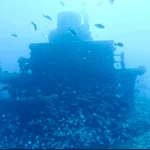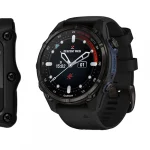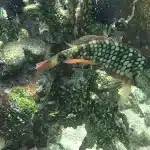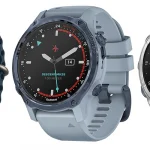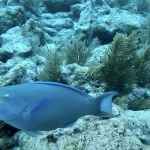Unearthing the Forgotten Reefs: A Scuba Diver’s Treasure Hunt
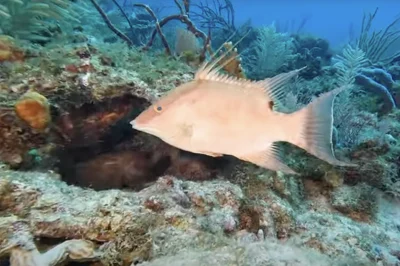
Table of Contents
- Unearthing the Forgotten Reefs: A Scuba Diver’s Treasure Hunt
- Dispelling Myths About Underrated Key West Reefs
- Avoiding the Vandenberg Trap: Common Diving Mistakes in Key West
- The Rise of Gretchen’s Reef: A Diver’s Guide
- Stat Attack: Unknown Reefs with Astonishing Marine Biodiversity
- Coral Rejuvenation: Thriving Reefs You’ve Never Dived Before
- Mastering the Tides: Planning Your Dive for Optimal Conditions
- Underwater Adventures Beyond the Horizon: Discovering Key West’s Best Kept Secrets
Introduction
Key West is a diver’s paradise, and while the Vandenberg wreck is famous, there are lesser-known reef dives that offer equally exhilarating experiences. This guide dives deep into these hidden gems, providing insightful information for avid scuba divers on how to explore these underwater wonders.
Unearthing the Forgotten Reefs: A Scuba Diver’s Treasure Hunt
Myth: Claustrophobic Individuals Can’t Dive
Reality: Many believe that claustrophobia is a barrier to scuba diving. However, for those with mild claustrophobia, diving can actually be liberating. Open-water environments provide a vast space that can alleviate feelings of confinement. Training courses gradually introduce divers to underwater conditions, allowing them to gain comfort and confidence at their own pace. With qualified instructors guiding them, students can learn to manage their anxiety effectively.
Myth: All Reef Dives Require Advanced Skills
Reality: It’s a common misconception that diving at many Key West reefs is only for seasoned divers. On the contrary, locations like Sambos Reef (depths ranging from 10 to 50 feet) and Eastern Dry Rocks offer crystal-clear waters and thriving marine life, making them ideal for divers of all skill levels. These sites are characterised by shallow coral formations, sandy channels, and sights such as parrotfish and nurse sharks. This accessibility allows beginners to enjoy the beauty of these underwater ecosystems without needing extensive experience.
Myth: Diving is Inaccessible to People with Disabilities
Reality: The notion that scuba diving isn’t feasible for individuals with disabilities is increasingly outdated. Innovative adaptive programmes, such as Camp Open Seas at Rainbow Reef Dive Center, have demonstrated that with proper training and specialised equipment, diving is possible for everyone. These initiatives focus on creating inclusive environments that enable adaptive scuba diving experiences.
Myth: Key West Lacks Quality Dive Sites
Reality: Key West is an integral part of the Florida Keys National Marine Sanctuary, which is home to the only living coral barrier reef in North America. Lesser-known yet remarkable locations like Spanky’s Back and protected sections of John Pennekamp Coral Reef State Park host vibrant reefs teeming with marine life, ensuring that divers encounter unforgettable underwater landscapes filled with colour and biodiversity.
Key Accessibility Insights
- Sambos Reef: Depth of 10–50 feet, features coral formations and parrotfish, suitable for all skill levels.
- Eastern Dry Rocks: Shallow diving with coral fingers and nurse sharks, easy navigation for beginners.
- John Pennekamp Coral Reef State Park: Offers protected marine life in no-take zones, friendly for novice divers.
Dispelling Myths About Underrated Key West Reefs
Diving in Key West offers exhilarating experiences, especially on popular sites like the Vandenberg. However, many divers make common mistakes that can impact the enjoyment and safety of their dives. Understanding these pitfalls is crucial for an enjoyable dive excursion.
Common Diving Mistakes in Key West
1. Underestimating Guidance Needs: Many divers choose to navigate the Vandenberg without hiring a private divemaster. The ship’s complex structure and depths (up to 140 ft) can pose significant challenges, particularly for those without Advanced Open Water certification. Opting for a divemaster can enhance safety and navigation, especially in such advanced dives.
2. Depth Certification Oversights: A prevalent error among divers is exceeding their certification limits. The Vandenberg’s depths require Advanced Open Water training. Some divers attempt to dive beyond their certification level, risking their safety.
3. Inadequate Redundant Safety Systems: Technical divers often neglect essential safety measures, such as backup tools like dual dive computers. Inadequate safety systems can lead to significant risks, especially during decompression or emergency scenarios.
4. Poor Dive Computer Choice: Using a dive computer that lacks the necessary features for deep dives is a critical mistake. Given that dives like those at the Vandenberg require precise tracking of depth, time, and gas, selecting an incompatible computer can lead to dangerous situations.
5. Ineffective Pre-Dive Planning: Choosing the wrong dive shop can compromise safety. Dive operators without adequate experience in wreck dives or poor pre-dive briefings may fail to communicate essential site-specific risks, such as strong currents or local marine life.
Alternatives to the Vandenberg
While the Vandenberg is frequently highlighted, divers often find more rewarding experiences at other sites in the Keys:
- USS Duane: At depths of 120–130 ft, this site offers challenging currents and an intact ship structure, attracting advanced technical divers.
- Eagle Wreck: Located at 110–130 ft, this wreck is teeming with marine life, including sightings of sharks, making it ideal for divers with Nitrox certification.
- Spiegel Grove: As the largest artificial reef in the area, this site features complex penetration routes, appealing to those specialising in wreck dives.
For divers seeking less challenging experiences, shallower sites like the Loxahatchee Reef offer vibrant marine life away from heavy traffic. Local operators like Captain’s Corner can arrange trips to these alternative wrecks, catering to diverse skill levels and preferences.
Avoiding the Vandenberg Trap: Common Diving Mistakes in Key West
The Rise of Gretchen’s Reef: A Diver’s Guide
As the popularity of Key West’s diving spots continues to soar, Gretchen’s Reef is emerging as a notable contender among the area’s diverse underwater environments. Although often overshadowed by the more commonly known sites, recent trends indicate a growing interest in diving this lesser-known reef. This chapter delves into what makes Gretchen’s Reef appealing to divers, how its fame is rising, and what divers can expect when exploring this hidden gem.
In 2025, the overall diving trend in Key West is characterised by an increased enthusiasm for exploring less conventional sites. It reflects a shift towards discovering the beauty of shallow reefs, where visibility is often better, and marine life is abundant. Divers are increasingly drawn to locations like Gretchen’s Reef for its tranquil conditions and vibrant biodiversity, particularly for beginner and intermediate divers looking to expand their experiences.
- Abundant Marine Life: Gretchen’s Reef is home to a rich variety of marine species including colourful coral formations, tropical fish, and often sightings of larger species like nurse sharks and stingrays.
- Accessibility: The reef’s relatively shallow depths (typically ranging from 20 to 40 feet) make it ideal for divers of all skill levels, providing an easy and enjoyable experience for newcomers.
- Guided Tours and Local Dive Shops: Many local dive operators recognise the rising popularity of Gretchen’s Reef and offer dedicated dive trips, providing equipment and guidance to ensure a safe, enjoyable outing.
As dive excursions increase, so does the potential for community engagement and education about marine conservation efforts in the region, enriching divers’ experiences. An increase in interest could lead to more organised clean-up efforts and educational programs, enhancing the sustainability of both Gretchen’s Reef and its surrounding ecosystems.
The Rise of Gretchen’s Reef: A Diver’s Guide
Advanced Biodiversity Metrics in Lesser-Known Reefs
Advanced biodiversity metrics for understudied coral reefs around Key West focus on habitat-specific measurements and ecosystem functionality, particularly in high-relief and patch reefs.
Key Metrics and Findings
- Biomass and Abundance
- High-relief reefs (e.g., those in the Florida Keys) exhibit 20–30% higher fish abundance and nearly double the biomass compared to linear or patch reefs.
- Patch reefs in inshore Lower Keys areas show positive carbonate production (2019 data), critical for reef growth, though these are often less documented.
- Species Richness and Functional Diversity
- High-relief reefs maintain ~20% higher species richness and greater functional redundancy (ability of species to compensate for losses).
- Back reef habitats exhibit high variability in metrics like percent live coral (%LC) and total surface area (TSA), suggesting niche biodiversity in overlooked zones.
- Monitoring Challenges
- Biomass and diversity declined across all habitats post-2007, including in no-take zones, highlighting the need for sustained monitoring of hidden sites.
- Lesser-known reefs (e.g., inshore back reef or patch reefs) may lack detailed data due to limited access or survey prioritisation.
Hidden Dive Sites and Understudied Habitats
- Key West’s back reef zones: High variability in coral metrics (%LC, TSA) and species assemblages make these areas ecologically unique but poorly mapped.
- Patch reefs in the Lower Keys: Often overshadowed by high-relief reefs but critical for carbonate production, acting as “hidden” nurseries for marine life.
For deeper insights, metrics like Simpson diversity (considering species abundance and distribution) and habitat-specific functional traits (e.g., herbivore-to-predator ratios) are recommended for assessing these sites.
Dive Computers
- Diving Computers for Female Divers
- Wreck Diving Computers
- Beginner Diving Computers
- Low-Light Diving Computers
- Technical Diving Computers
- Freediving Computers
- Underwater Photography Diving Computers
- Cold-Water Diving Computers
- Travel-Friendly Diving Computers
- Multi-sport Diving Computers
- Budget-Friendly Diving Computers
- Advanced Recreational Diving Computers
- Smartwatch-Compatible Diving Computers
- Child-Friendly Diving Computers
- Military or Professional Diving Computers
Stat Attack: Unknown Reefs with Astonishing Marine Biodiversity
For divers seeking lesser-known diving spots near Key West, several reefs and wrecks offer unique experiences away from crowded areas:
Sambos Reef
A collection of three reefs (Eastern, Middle, and Western Sambo) set apart by stunning white sand flats, Sambos Reef presents depths ranging from 10 to 50 feet (4 to 15 m). This site is perfect for novice to intermediate divers, showcasing a rich variety of marine life alongside relatively untouched coral formations.
Joe’s Tug
Located approximately six miles south of Key West, this intriguing wreck is home to a resident jewfish, affectionately named Elvis. Depths at Joe’s Tug reach 45 to 65 feet (14 to 20 m), appealing to more advanced divers seeking both artificial reefs and encounters with pelagic species.
Sand Key
Situated seven miles southwest of Key West, Sand Key offers an inviting combination of snorkelling and diving opportunities. The site features depths varying from 35 to 75 feet (11 to 23 m) and boasts vibrant coral gardens along with the occasional sighting of sharks, making it an exhilarating dive spot.
Cayman Salvage
This historical site is a 187-foot Coast Guard tender that was sunk five miles south of Key West. With average depths between 67 to 93 feet (18 to 28 m), it caters to technical divers eager to explore submerged nautical history and intricate ecosystems.
L81 and Nine Foot Reef
Found southeast of the harbour on the first reef edge, both L81 and Nine Foot Reef feature depths around 40 to 50 feet (12 to 15 m). Known for their diverse marine life and moderate currents, these sites remain relatively under the radar, offering a tranquil diving experience.
Key Distinguishing Features
- Sambos Reef: 10–50 ft; Shallow sand flats, diverse coral.
- Joe’s Tug: 45–65 ft; Resident jewfish, wreck exploration.
- Sand Key: 35–75 ft; Dual snorkelling/diving zones.
- Cayman Salvage: 67–93 ft; Technical dive, large vessel.
- L81/Nine Foot Reef: ~40–50 ft; Reef edge biodiversity.
These locations provide appealing alternatives to popular dives like the Vandenberg, prioritising quieter experiences and thriving ecosystems.
Coral Rejuvenation: Thriving Reefs You’ve Never Dived Before
Optimal Marine Conditions for Key West Diving
For scuba divers keen on experiencing the hidden underwater treasures of Key West, choosing the right time to dive can make all the difference. The prime diving season spans from July to October, where water temperatures, visibility, and marine life activity create exceptional conditions.
Best Months for Diving
- July: Water temperatures stabilise above 85°F, providing a comfortable experience with very good visibility. This month coincides with the lobster mini-season, offering divers a chance to hunt for these delicacies just before the full season kicks in.
- August: This is when water temperatures peak at around 86°F. August not only features excellent diving conditions but also marks the height of lobster season, making it a highly anticipated month for many divers.
- September: With temperatures still in the high 80s, September offers a quieter diving experience relative to the summer months. Sea conditions remain favourable, though occasional breezy days can affect dive plans.
- October: As temperatures begin to cool slightly to the mid-80s, October brings an increase in game fish activity, providing exciting opportunities for those looking to capture stunning underwater images or simply enjoy remarkable dive experiences.
Water Conditions Overview
| Month | Temperature (Surface) | Notes |
|---|---|---|
| July | 85°F+ | Consistent warmth makes it ideal for extended dives. |
| August | 86°F | Peak temperatures; perfect for lobster hunting. |
| September | High 80s | Ideal for those seeking a quieter experience with favourable conditions. |
| October | Mid-80s | Comfortable temperatures attract various fish species, enhancing the diving experience. |
Key Considerations for Divers
- Lobster Season: The mini-season starts in late July, with the peak continuing through August. Make sure you have the required licences and gear.
- Crowd Levels: September sees a significant drop in visitors, allowing for a more relaxed diving experience.
- Wind and Currents: Conditions can change rapidly, particularly in late summer. Be prepared to adjust your dive locations if currents are strong.
- Wetsuit Recommendations: A 3 mm wetsuit is suitable during the warmer months, while divers may need a thicker 5 mm wetsuit in cooler seasons starting in November.
For real-time updates, always check with local dive operators to stay informed about current conditions and potential site adjustments.
Mastering the Tides: Planning Your Dive for Optimal Conditions
Key West offers several hidden dive spots that provide unique experiences for scuba enthusiasts, along with practical tips to enhance your adventure. Here’s a curated guide based on local insights:
Hidden Dive Spots
- Ten-Fathom Ledge (All-Alone Wreck): Located one mile southwest of Western Sambo Reef, this intermediate-to-advanced dive features a 75-foot tugboat wreck at 90 feet. The split hull is home to barracuda, grouper, and snook. The ledge itself offers shallower snorkelling options.
- Western Sambo Reef (Cannonball Cut): This spot boasts a diverse coral ecosystem, featuring brain, elkhorn, and boulder corals, along with a submerged tugboat wreck. The “Cannonball Cut” area is known for spiny lobsters and occasional tarpon sightings.
- Joe’s Tug: Situated six miles south of Key West, this wreck shelters a resident jewfish named Elvis. Depths range from 45 to 65 feet, making it suitable for skill levels from advanced beginner to intermediate.
- Cayman Salvage Master: An artificial reef that sank prematurely at 92 feet, this site hosts Goliath groupers and morays. The accidental placement of this 180-foot vessel in shallower waters created a unique ecosystem.
Pro Tips
- Choose Reputable Operators: Work with local experts to access lesser-known sites and receive safety briefings.
- Check Conditions: Currents and visibility vary—prioritise dives during calmer morning hours for a safer, less crowded experience.
- Depth Management: Adjust air consumption for deeper sites to avoid barotrauma or oxygen toxicity risks.
Notable Experiences
- Marine Encounters:
- Sambo Reefs: Observe lobsters, tarpon, and vibrant coral gardens in Eastern, Middle, or Western Sambo at depths of 10–50 feet.
- Sand Key: While popular for snorkelling, advanced divers can explore its deeper reef slopes (35–75 feet) teeming with tropical fish.
- Wreck Diving: The All-Alone tugboat and Cayman Salvage Master offer immersive historical dives and large marine life interactions.
For optimal results, pair these spots with local expertise to maximise safety and enjoyment.
Underwater Adventures Beyond the Horizon: Discovering Key West’s Best Kept Secrets
Key West, known for its stunning waters and rich marine life, offers many lesser-known dive sites that allow divers to experience the beauty of coral reefs without the crowds. Here are some of the best options for divers looking to explore hidden underwater gems.
Western Sambo
This reef, located on the western side of Sambo Reefs, features shallow depths (around 30 ft) and a variety of corals, including brain and elkhorn species. The area known as Cannonball Cut offers a sunken tugboat wreck alongside vibrant marine life, including spiny lobsters, which adds an element of intrigue to your dive experience.
Middle Sambo
Positioned between Eastern and Western Sambo, Middle Sambo is a beginner-friendly dive site with depths reaching about 35 ft. It is characterised by extensive coral gardens that host an abundance of marine life, including tarpon and various crustaceans. This site is ideal for newer divers wishing to explore without feeling overwhelmed.
Cottrell Key
Cottrell Key is a hidden treasure featuring intact coral ecosystems and a variety of marine life. Divers here might encounter larger fish such as barracudas, making it a thrilling spot for adventurous snorkelers looking to observe nature up close.
Pickles Reef
Though not completely unknown, Pickles Reef is less trafficked than popular sites like Sand Key. This location is celebrated for its vibrant coral formations and diverse marine life, including angelfish, nurse sharks, and sea turtles, making it a colourful dive site worth exploring.
Western Dry Rocks
Situated near Key West, Western Dry Rocks showcases sprawling coral gardens populated by schools of snappers and grunts. The clear waters here provide excellent visibility for observing the intricate details of reef life, making it a perfect site for underwater photography.
For divers looking to escape the hustle of more popular spots, Western Sambo, Middle Sambo, and Pickles Reef provide secluded experiences rich in biodiversity. Opting for these lesser-known sites ensures a more intimate connection with the underwater world, enhancing your overall diving adventure in Key West.
Sources
- Scuba Diving – Tales of the Florida Keys
- Lost Reef Adventures – Does Key West Have Good Diving?
- Dive Curacao – Scuba Diving Myths
- Florida Scuba Diving – Penetrating the Vandenberg
- First Church of the Masochist – Diving the Vandenberg Wreck
- Scubaboard – How is the Dive at Vandenberg
- Bluewater Travel – Best Scuba Diving in the World 2025
- Key West Scuba Diving – 2025 Diving Calendar

